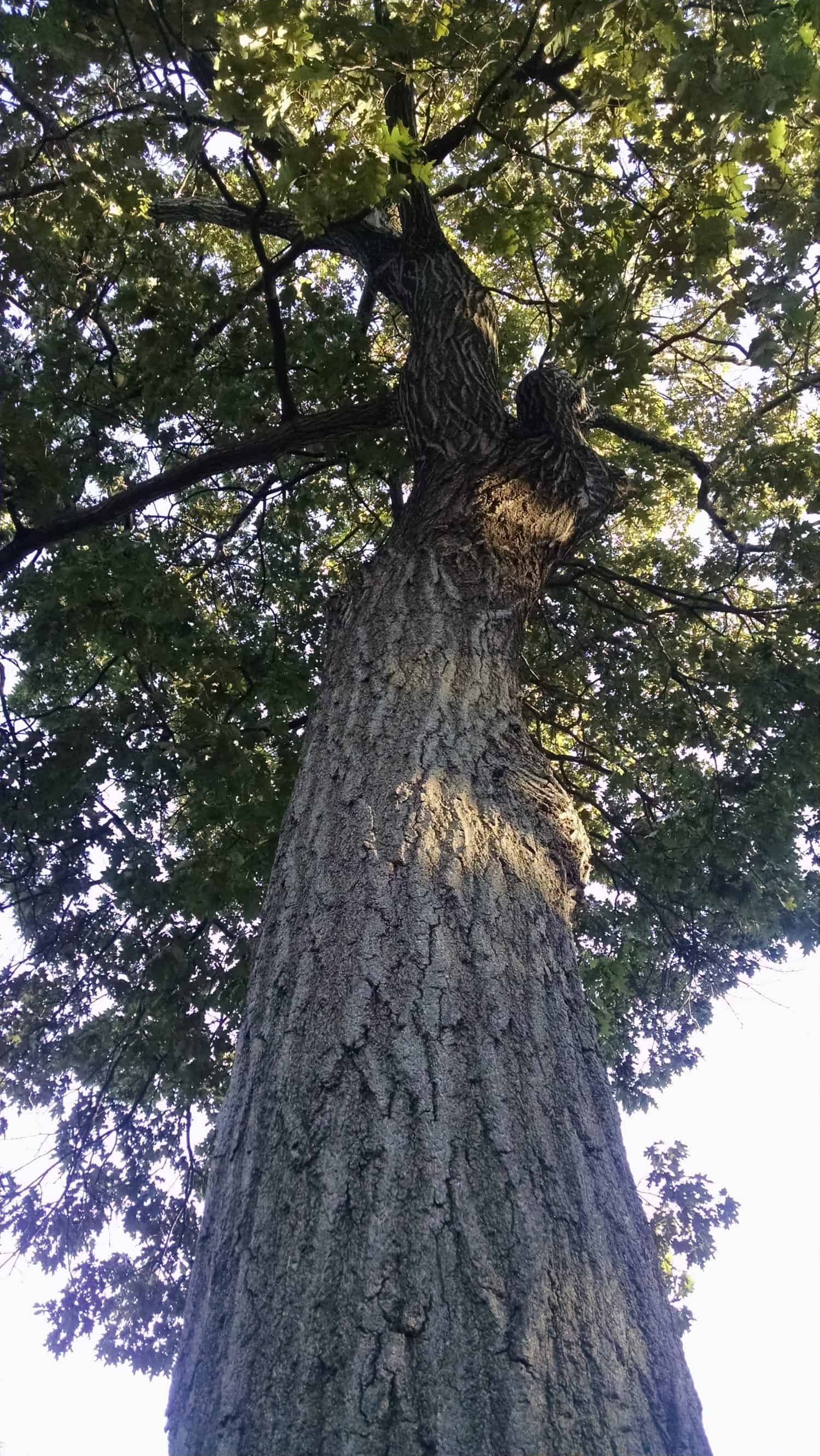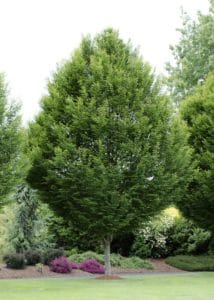
This is Bruce. He is a tree – a mighty Oak, nonetheless. He is magnificent and statuesque. He is wise and witty. I’m sure there are times Bruce is simply not in the mood to listen to me prattle on. I’m sure there are times he would like to throttle me or plug his ears, if he had them. I’m sure there are times Bruce wished he lived in a distant, quiet wood, but he does not. He resides in my front yard. He is my friend and so very much more!
In celebration of Arbor Day this Friday, April 27th, I’d like to take a moment to remind you how important and fascinating trees are, and how best we can honor them. Hugging is not entirely necessary. Bruce, as you might imagine, is quite humble and requires no accolades nor lingering embraces, yet he is deserving of them all the same.
- A single tree can produce up to 260 lbs of oxygen annually. A mature tree can provide enough oxygen to support two people for an entire year.
- Many food products, like fruit, nuts and coffee come from trees in addition to food additives, like those used in gum or ice cream.
- Trees are the largest living organisms on earth.
- Well maintained, healthy trees can increase a property’s value by 14%.
- Trees sited properly around homes and buildings can reduce air conditioning costs by 30% and heating costs by 20%.
- Trees can communicate with each other. Certain types of trees can warn other trees when they are under attack. Excess chemicals are produced in the leaves, making them distasteful to insects while warning surrounding trees.
- Trees are deterrents to crime, according to the U.S. Forest Service. Areas and communities with larger trees experiences less crime. It is thought that criminals perceive these areas/homes as better maintained and secured.
- Trees experience stress which can inhibit their growth. Stressors include poor soil quality, overcrowding and competition for water.
- Many medicines we use today were derived from trees, like aspirin from Willow bark.
- One large tree can lift up to 100 gallons of water out of the ground and discharge it into the air.
- When planting a tree, do some research first. Find out its specific needs before selecting a site. Take into consideration the tree’s mature height and width, light requirements and soil preference. Siting a tree correctly with help insure its health and vigor.
- Trees should be mulched. Mulch helps retain moisture, deters weed growth and subsequent root competition, prevents soil compaction and helps protect against mower damage.
- Too much water is just as harmful as not enough. The general rule of thumb for keeping trees well watered is moist soil. Create a small narrow trench about 2″ deep and feel the soil. It should feel moist.
- Prune properly and at the right time.
- Monitor trees for disease and infestation.
Trees ask very little and give so very much in return. Serve them today and always as they have served us. Contact Sweeney’s to plant a tree, or learn how to best care for them. Remember, hugging is optional.
Plant of the Week

American Hornbeam
Native, deciduous, understory tree with fine textured foliage that emerges reddish-purple, then matures to a deep green, followed by a yellowish-orange in Fall. Bluish-gray bark offers Winter interest. Does well in full shade and performs admirably in full sun where it grows more dense. Prefers moist, well-drained soil. Grows 20-30′ tall and 20-30′ wide.
“No wonder the hills and groves were God’s first temples, and the more they are cut down and hewn into cathedrals and churches, the farther off and dimmer seems the Lord himself.”
-John Muir
Best wishes,
Kim Sweeney
